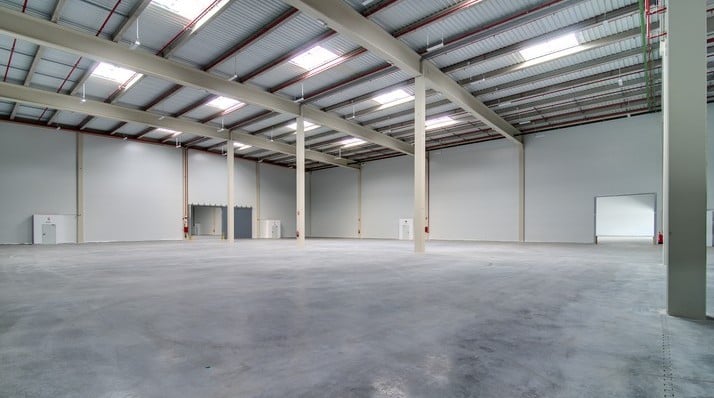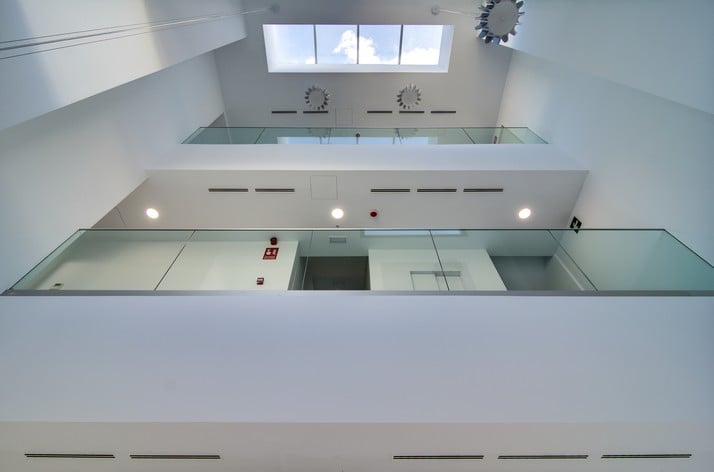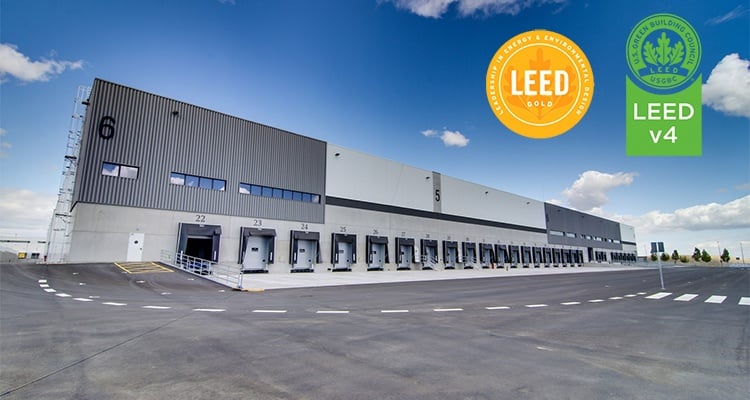The project, promoted by Logistik Service, has received the LEED v4 GOLD certification. Which makes it the first logistics platform in the world to achieve this certification with the Warehouse and Distribution Centers scheme. Such certification adapts to the particularities of logistics projects by promoting sustainability measures tailored to these types of buildings.
Getafe, Madrid: After intense work in the construction and commissioning of the logistics park, the project has become the first warehouse certified LEED V4 GOLD.
The project places special emphasis on energy efficiency, user comfort and life cycle analysis of materials, but above all it should be noted that it does so by taking into account the particularities of logistics projects, which are included in the new LEED certification Warehouse and Distribution Centers.
The project has been developed from the outset with the aim of achieving LEED certification thanks to the determination of the developer, Logistik Service, to achieve high environmental objectives and to ensure that these are compatible with excellent design, tight construction deadlines and advantageous solutions for the future occupants of the building.
Comfort and energy efficiency, two basic priorities
Measures for energy savings and comfort in the Warehouse
With a surface area of 37,600 m2 divided into six modules, the warehouse has a roof with eight centimetres of insulation and automatic systems that allow natural ventilation, guaranteeing thermal comfort in the absence of HVAC. The roof has semi-transparent smoke vents that allow natural lighting throughout the entire warehouse. These vents are equipped with wind and rain sensors to close when necessary.

Image of the interior of one of the buildings
Artificial lighting is carried out using LED technology, designed to ensure optimal visual comfort and adequate light levels with low energy consumption. Natural and artificial lighting are perfectly combined through lighting and presence sensors, thus achieving significant energy savings in the main consumption of any logistic warehouse.
Natural and artificial lighting are perfectly combined through lighting and presence sensors, thus achieving significant energy savings in the main consumption of any logistic warehouse.
Energy savings and ventilation measures in Offices
The office area is distributed between an annex building at the entrance and mezzanine spaces in each warehouse. The ventilation has been designed to ensure high air quality, which allows for increased productivity rates and reduced absenteeism.
To achieve a reduction in the building's energy consumption, the envelope and the envelopes of the HVAC spaces have insulation superior to the minimum requirements of the CTE, and the HVAC system is carried out using high energy efficiency VRV technology. This not only results in greater energy savings, but also has a significant impact on occupant comfort as it notably improves thermal comfort.
To achieve a reduction in the building's energy consumption, the envelope and the envelopes of the HVAC spaces have insulation superior to the minimum requirements of the CTE.
In addition, more than 20% of the platform's energy consumption is covered by the installed photovoltaic solar panels.
Visit our previous article discussing in detail the measures adopted in the project.
Improvements in occupant comfort
The layout of the rooms inside the building has been designed to maximise the use of sunlight and to ensure that all occupants have direct views of the outside from their workstations. The central area of the building is reserved for rooms such as changing rooms or stairs, which have lower occupancy.

Interior lobby of the office building
Materials have been selected that allow for optimal interior sound quality. Acoustic false ceilings have been installed and improvements have been made to the construction solutions to maximise insulation and reduce the reverberation time of the rooms, as well as acoustic insulation with the exterior.
Another very important aspect considered is the emissions of formaldehydes and volatile organic compounds from the chosen materials. This, along with the 30% increase in ventilation compared to the regulations, improves indoor air quality, which directly impacts workers' health and comfort, increasing productivity and reducing absenteeism.
All this results in an improvement in the well-being of workers who will enjoy a comfortable and healthy environment, reducing absenteeism and promoting productivity.
Materials with low environmental impact gain importance
The carbon footprint of construction materials is becoming increasingly important when evaluating the environmental impact of buildings. For this reason, a building life cycle analysis has been carried out, prioritizing materials that have an Environmental Product Declaration (EPD). This document informs us of the emissions of carbon dioxide and other pollutants related to the extraction, transport of raw materials and the manufacturing process of the materials. The good choice of construction materials and the good management of natural resources have been an important contribution to the LEED certification in this project.
On the other hand, it is important to highlight the effort made both during the construction phase and during the building use phase to improve the management of all generated waste.
In this case, during the construction phase, paper, cardboard, plastic, metals, wood, debris, gypsum board, PIR insulation, concrete, and ceramic waste have been recycled. To this end, a monitoring process has been carried out throughout the management, using an online platform that allows for the collection of all waste delivery notes and tracking through weekly photographs to verify the implementation of the measures.
With all the measures discussed, the building has demonstrated a 39.62% energy consumption reduction compared to a conventional building and the comfort of the users has been notably improved.
The developer has seen an increase in the value of his property in proportion to the measures taken, as the buildings are more attractive, especially for multinational companies concerned with attracting talent and promoting the well-being and comfort of their employees.


